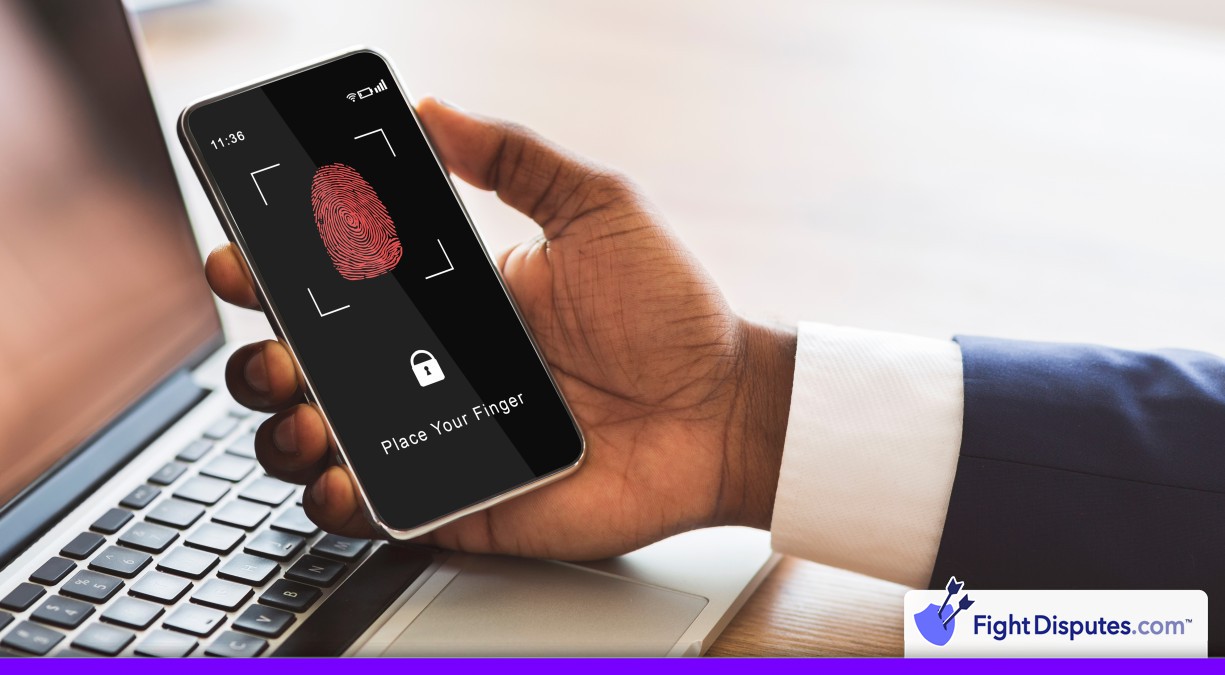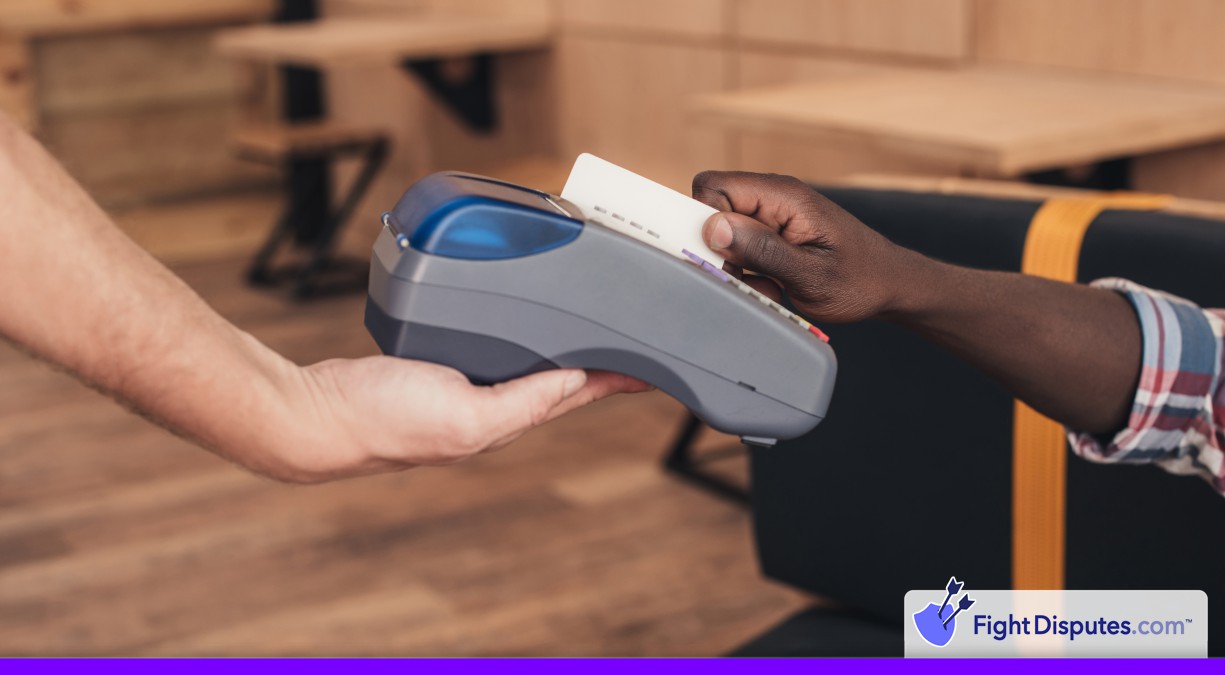What is 3DS (3D Secure)?
3DS is a security tool that double-checks who placed the online payment. That extra check stops the fraudulent chargebacks that can hurt your business. At checkout 3DS can add another verification step where buyers confirm their identity with their bank – maybe with a password, their fingerprint or a code sent to their phone. The payment only goes through after they pass that hurdle.
The big benefit for merchants shows up after this part finishes. Once a customer passes 3DS, the financial responsibility for any later fraud usually moves from you to the card issuer. If a cardholder later claims that the transaction was fake, you’re normally shielded from those expensive chargebacks. The bank takes on that danger instead of leaving you exposed.
Because of that change, 3DS is one of the best ways to cut down on friendly fraud and unauthorized disputes. Friendly fraud happens when customers make an actual purchase but later dispute it anyway. Maybe they forget about that order or a family member used the card without their knowledge. Either way, these disputes can drain your revenue and damage your merchant account over time.
Without 3DS, you’re left on your own in a dispute. You have to prove that the transaction was legitimate and even a perfect paper trail might not save the sale. With 3DS you have evidence that the cardholder okayed the charge. That liability change lets you focus on your business operations instead of non-stop chargeback disputes.
How It Works
Your customer types in their payment info and hits the buy button, then a whole verification process starts behind the scenes. The payment information travels to their card issuer along with over 100 different data points about the transaction – and this all happens in milliseconds and your customer never even sees it.
The card issuer’s system looks at all this information and decides if the buy seems legitimate. In most cases with low-stakes transactions, everything gets approved automatically. A smooth process happens when customers have bought from you before or when they place a small order. Your customer just sees their order confirmation and moves on with their day.
But sometimes the system needs some confirmation that it’s the cardholder who wants to make the buy. Maybe they buy something expensive or they use a new device. This triggers what’s called a challenge flow. The customer might need to enter a code from a text message or approve the order through their banking app. Some banks even use fingerprint or face recognition on phones.
They want to double-check that the person with the card is actually the one who wants to buy from you. Once they finish this extra verification step, the issuer sends back either an approval or a decline. Either way, you find out if the sale should go through or not. The nice part about modern 3DS2 is that most customers go right through without any extra steps at all.
How it Affects Chargeback Prevention
The main reason most merchants use 3DS is chargeback defense. Once a customer completes 3DS authentication, something pretty big happens with the fraud liability. All that responsibility moves away from you as the merchant and goes to the card issuer instead. You don’t have to manage fraud claims anymore.
This defense matters to your business finances. A customer can’t come back weeks later to claim they never made that order because they already proved that it was them with their password or when they tap approve on their phone – this authentication step alone usually cuts chargebacks by anywhere from 40-70% for most businesses.
If a dispute does pop up later, that authentication works in your favor. You have proof that the person who owns the card approved the transaction. It’s tough for anyone to argue with all of this evidence. Card issuers know the customer took those extra verification steps. That carries weight.
3DS won’t solve every chargeback problem you might run into, of course. Customers can still dispute charges if they’re unhappy with a product or if their order never shows up. But fraud disputes are usually the most expensive and most common type of chargeback that merchants run into. You save money on dispute fees, lost merchandise, and you virtually eliminate most of your fraud cases.
The liability change happens automatically once the authentication goes through. You don’t need to file any extra paperwork or take extra steps to claim this benefit – it just happens as part of the normal 3DS system.
Example Scenarios
A scammer tries to buy a $2,000 laptop from your store with stolen card information. Without 3DS protection, that transaction would probably go right through and you’d be stuck with the loss weeks later once the cardholder sees the charge and disputes it. With 3DS enabled though, the criminal gets stopped at checkout because they can’t finish the authentication step. The cardholder never even knows that anyone tried to use their card.
Another scenario that happens quite a bit in e-commerce: a customer orders $150 worth of products and receives everything without any problems. Two months pass and then they file a chargeback claiming they never made that order. You’d lose this dispute right away because there’s no way to prove they authorized it. But if you had used 3DS for that transaction, you can give the authentication record as evidence and this shows the customer actually authorized the payment themselves. You’ll win the dispute every time.
Subscription services face this same headache when customers claim that every charge was unauthorized. Authenticating their original signup with 3DS gives you strong proof that the customer knew what they were signing up for. Those “I never agreed to this” claims become much harder for them to defend with records on your side.
The pattern gets pretty obvious as you see it in action. 3DS gives you an electronic paper trail that protects your business when customers develop selective memory about their purchases and it stops fraudsters cold before they hurt your bottom line.
Requirements and Timeframes
3DS requirements change dramatically based on where you run your business. European merchants don’t get a choice in the matter – PSD2 laws now require that you have Strong Customer Authentication and 3DS is now a legal must-have instead of an optional extra. Businesses in North America and most other regions still have the flexibility to choose if they want to use it. Payment industry experts usually recommend it mainly because it moves the fraud liability away from you and back to the card issuer.
The setup process usually takes between 2 and 4 weeks – even though that timeline changes depending on which payment processor you use. The great news is that nearly every modern payment gateway already includes 3DS tools right out of the box, so you won’t have much technical work on your side to get it running.
You should go with 3DS2 and not the original 3DS1 protocol. Mastercard made all merchants switch to 3DS2 in October 2022, and the older version can’t keep up with modern transaction needs anymore. Some transaction types skip the 3DS authentication altogether – low-value purchases usually qualify for exemptions in lots of regions.
Selling internationally gets tougher because each country has its own policies and restrictions. What works great for American customers might actually cause big problems when you expand to places like Germany or Australia. Payment processors usually have guides that list the exact policies for each market and most of them provide plenty of resources for every country where merchants want to sell.
Frequently Asked Questions
Is 3DS mandatory for my online business?
No. What gets interesting is that even if 3DS isn't legally needed, you might still wind up having to use it anyway - this tends to happen quite a bit if you run a business that makes banks and payment processors a little nervous. Online gambling sites, cryptocurrency exchanges and other high-risk ventures are usually told that they have to switch on 3DS even if they'd skip it. The payment processor is trying to shield itself from possible fraud losses. That requirement flows down to you through the merchant agreement.
The upside is that using 3DS on your own can make genuine financial sense for lots of businesses. When you use 3DS and a fraudulent payment still slips through, the issuing bank has to cover the loss instead of you. That move of liability can wind up saving you big money over time. You trade a bit of checkout friction for strong financial protection.
Cart abandonment makes merchants nervous when they think about adding another authentication step. That worry is fair. But when you're already facing standard chargebacks and fraud disputes, the protection that 3DS gives you might well be worth the trade-off. Every business has to look carefully at these competing problems in light of its own situation and risk tolerance.
Will implementing 3DS increase cart abandonment?
Potentially, but some of those abandoned carts are fraudsters who were stealing credit cards. The 3DS authentication anxiety about checkout complications is understandable because the older systems did create problems. The original 3DS technology was tough on conversion rates - it caused somewhere between 20% and 30% of customers to give up and abandon their carts completely. No business wants to see that much revenue disappear.
The newer version of 3DS has improved quite a bit and most transactions don't need any extra steps from your customers at all. The authentication system checks each payment in real time and decides if it needs the extra verification. About 95% of normal purchases go through easily.
When the system does need to verify a customer's identity, the whole experience has become much faster and smoother than it used to be. Usually your customer will just need to approve the transaction immediately in their mobile banking app or type in the short code that gets sent to their phone. The verification part only takes a few seconds and even with this extra step you're still looking at only about 1% to 3% of customers who leave their order.
The bottom line for your business is that the money you save from fraud prevention usually more than makes up for any lost sales. A single fraudulent chargeback can cost you hundreds of dollars in fees and lost inventory. You'd have to lose quite a few actual sales to match that financial hit. You can cut down on cart abandonment even more by explaining to customers why you use these security measures - letting them know that you're actively protecting their payment information.
Does 3DS guarantee I won't receive chargebacks?
No. 3DS won't protect you from the chargebacks that come your way. Customers who receive broken products or never get their orders can still dispute those charges and the same happens with duplicate charges or other processing mistakes on your end. What 3DS actually takes care of is fraud disputes and the true value shows up right here for most businesses.
It matters because most of the chargebacks you see are fraud-related - roughly 60-70% of all disputes fall into that category. When a transaction goes through 3DS authentication, the customer has to double-check that it's them making the order. They can't come back weeks later and claim that somebody stole their card to make that transaction.
The change in liability is what makes the protection work. Without 3DS, you're eating the cost whenever a customer claims fraud. When it's in place the bank takes on that responsibility because they're the ones who verified the customer's identity in the first place. It's their authentication system doing the verification work.
You'll still need to get your products shipped on time and stay away from billing errors. 3DS can't save you from those kinds of operational problems. But since fraud makes up a decent chunk of the chargebacks you're already much better off just by having it. Once a customer authenticates a transaction through the system it becomes nearly impossible for them to win a fraud dispute against you later on.
What's the cost difference between 3DS1 and 3DS2?
Modern authentication works best because it runs quietly in the background for most transactions. Low-danger customers still get the smooth checkout experience they expect and high-danger transactions automatically receive the extra security they need - it means that you won't force all customers through unnecessary verification steps. That was the exact problem that caused issues with the earlier versions.
The newer version has slightly higher initial setup costs. But in most cases you'll spend less with better approval rates and far fewer abandoned carts. Most payment providers now build these features into their standard pricing instead of adding separate charges. Since the original version is already phased out, it shouldn't even be on your radar for new setups. The money that you save from far fewer chargebacks and fraud losses usually covers any setup costs within just a few months and makes it a sound financial move for most businesses.
 Call (844) NO-DISPUTES
Call (844) NO-DISPUTES



